Site Audit Report Details - Basic
The basic report presented contains information on SEO implementation on the audited pages. It is divided into several sections such as identification of meta tags on web pages, checking HTML that is not working properly, displaying on-page SEO scores, content duplication, total click depth, and checking metrics for SEO optimization.
Click the settings icon at one of the URLs in the Issue Details table to access the basic audit report. You will be redirected to the audit report detail page, then select the basic menu to access the basic audit report. In this guideline, we will guide you through each section of the basic audit report.
Mandatory
This page audit report is compiled from meta title information containing the title of the content displayed in search results, a meta description containing a brief description of the content, as well as the results of checking the meta title and meta description whether they have an ideal length for SEO optimization.
Not only that, but there is also charset information that is used to tell the web browser with what character set the web page will be displayed. Some other information such as follow and no-follow links, identification of the meta tag generator used, to the favicon URL for the icon or logo displayed on the browser tab.
We also provide URL canonical data that tell us which URLs have identical content. Using canonical URLs can help web owners prevent Google from detecting duplicate pages. In this report, you can also see the number of internal and external links on the selected page.
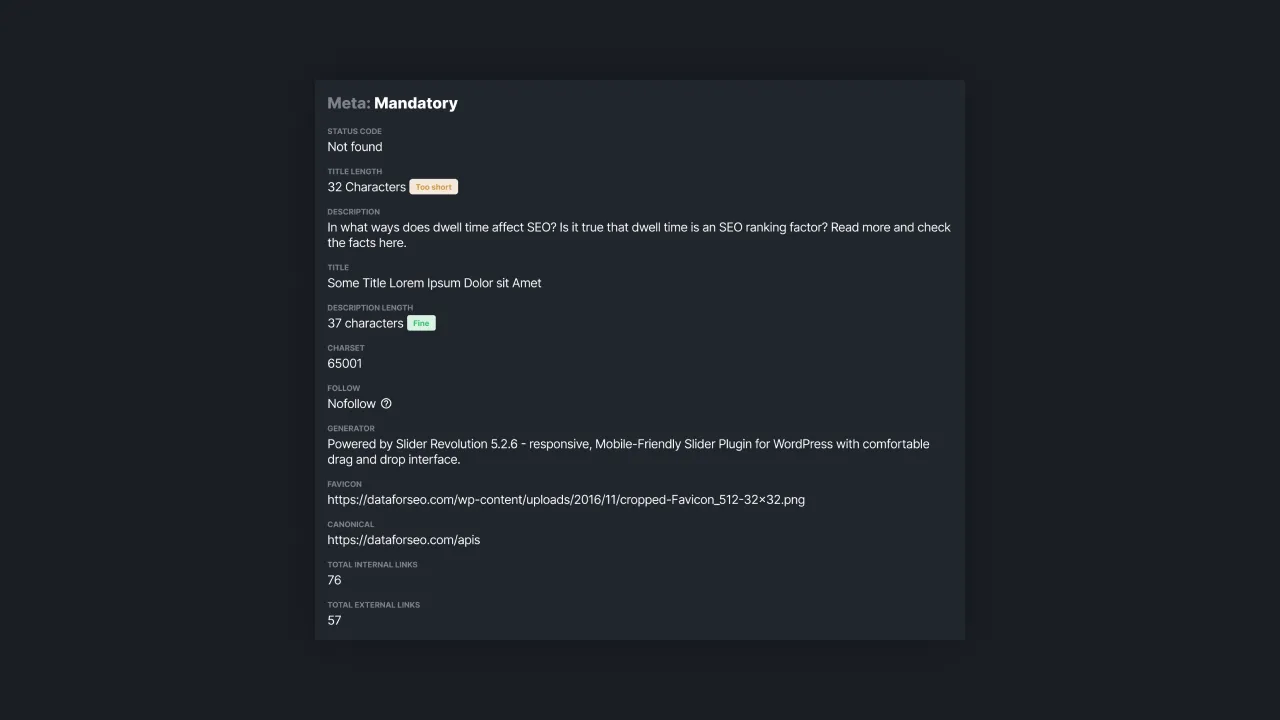 |
|---|
| Figure 1 - Meta Basic Audit Report: Mandatory |
Heading Tags
Heading tags in HTML are used as page title markers. It is divided into 6 levels showing a hierarchy of heading structure, starting from H1 with the largest font size to H6 which has the smallest font size. This report will list the heading tags used and display the content.
Headings with interesting keywords that represent the content can keep users intact in exploring the page longer. In addition, the use of the right heading tags can help search engines to find important keywords in your content. It will affect the website's position in search results.
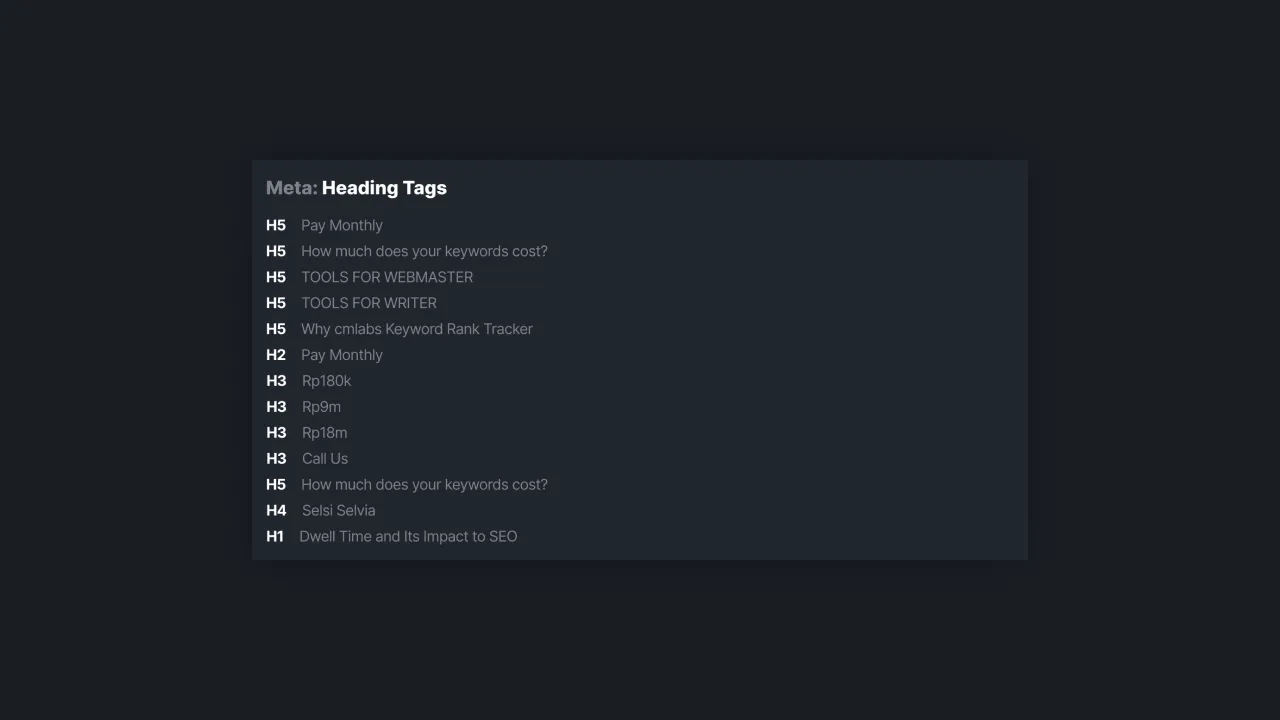 |
|---|
| Figure 2 - Meta Basic Audit Report: Heading Tags |
Broken HTML
It reports the lists of problems with the implementation of your HTML structure. We will display the type of error, the error message that is displayed, where the error is in the HTML file (at what line), and the HTTP status code. You can add this report to the kanban system to make SEO improvements and optimizations with your team.
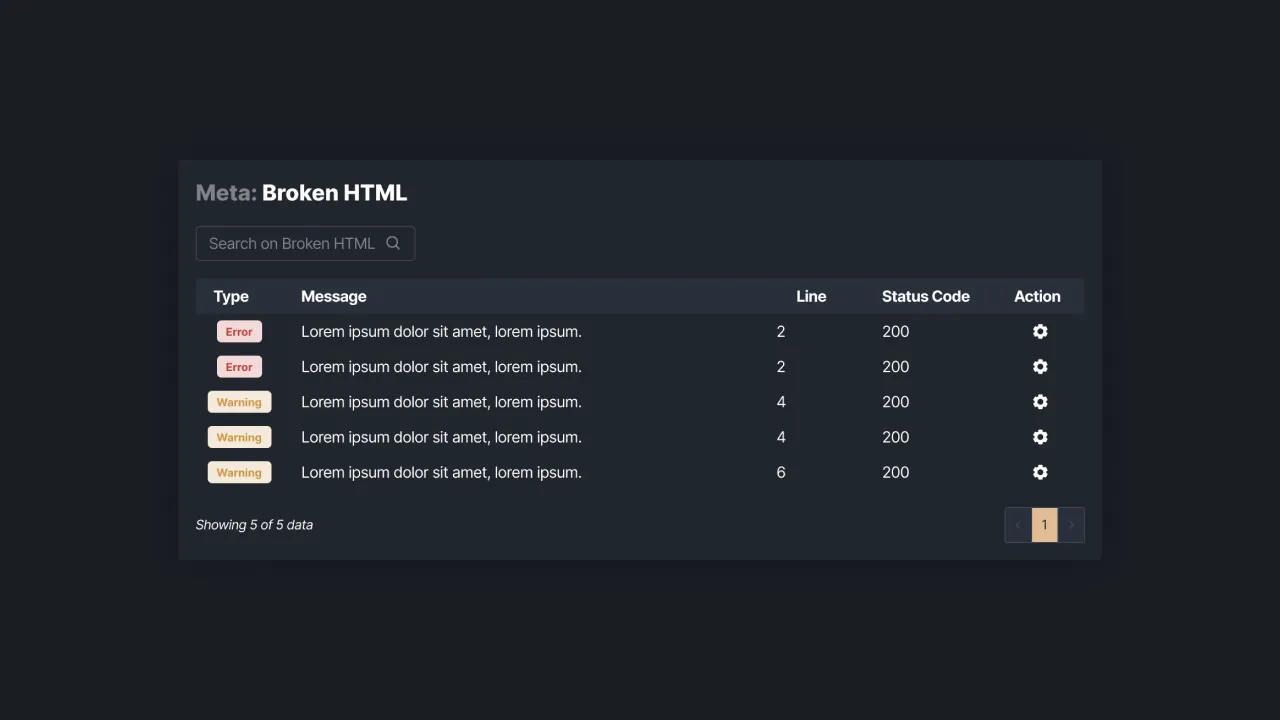 |
|---|
| Figure 3 - Meta Basic Audit Report: Broken HTML |
Social Media
The following report displays an open graph of meta tags that are used to define how URLs will be displayed when shared on social media to entice the audience to click on them. You will see the open graph tags used and the content defined for each tag.
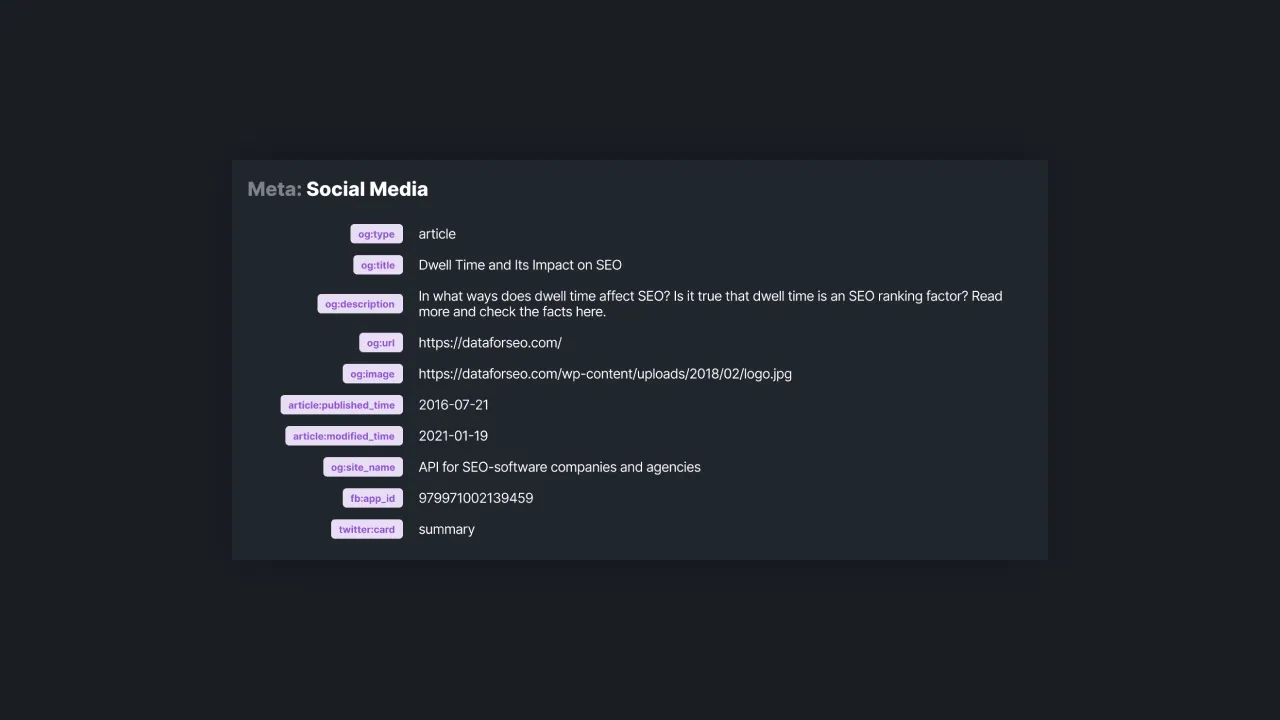 |
|---|
| Figure 4 - Meta Basic Audit Report: Social Media |
An explanation of the supporting open graph meta tags that will help you understand this report is shown in Table 1 below.
Table 1 - Social Media Meta Tag
| Column A | Tag | Description |
|---|---|---|
| Content type | og:type | Your content media type. If the content type is not set, the default is a website. |
| URL | og:url | Contains absolute URLs, similar to canonical URLs. |
| Title | og:title | The title of the content shown in the preview on social media. |
| Description | og:description | A brief description of the content placed under the post title. |
| Image | og:image | The URL for the image that appears when the page content is shared on Facebook. |
| Site name | og:site_name | Define your website name or website brand. |
| Facebook ID | fb:app_id | Setting app id to use Facebook Insights. |
| Twitter Cards | twitter:card | Meta tag code to retrieve a summary of a website or blog when it is shared on Twitter. |
| Meta tags related to content type - articles | ||
| Publish time | article:published_time | Displays the publication date of the article. |
| Last modified | article:modified_time | Loads the last time the article was edited. |
| Author | article:author | Loading Facebook profile URL or author ID. |
| Article tag | article:tag | Contains any tags contained in the article. |
Checker
The checker tool is used to test metrics related to SEO optimization. The audit results displayed include the name of the evaluated metric and its status. Page testing metrics include high loading time, redirects, canonicals, SEO-friendly URLs, and more.
If the URL being audited contains this metric, the status will be true. On the other hand, if this metric is not found in the test, the status will be false. On the right side of the report, you can access a brief description of the metrics tested on your web page.
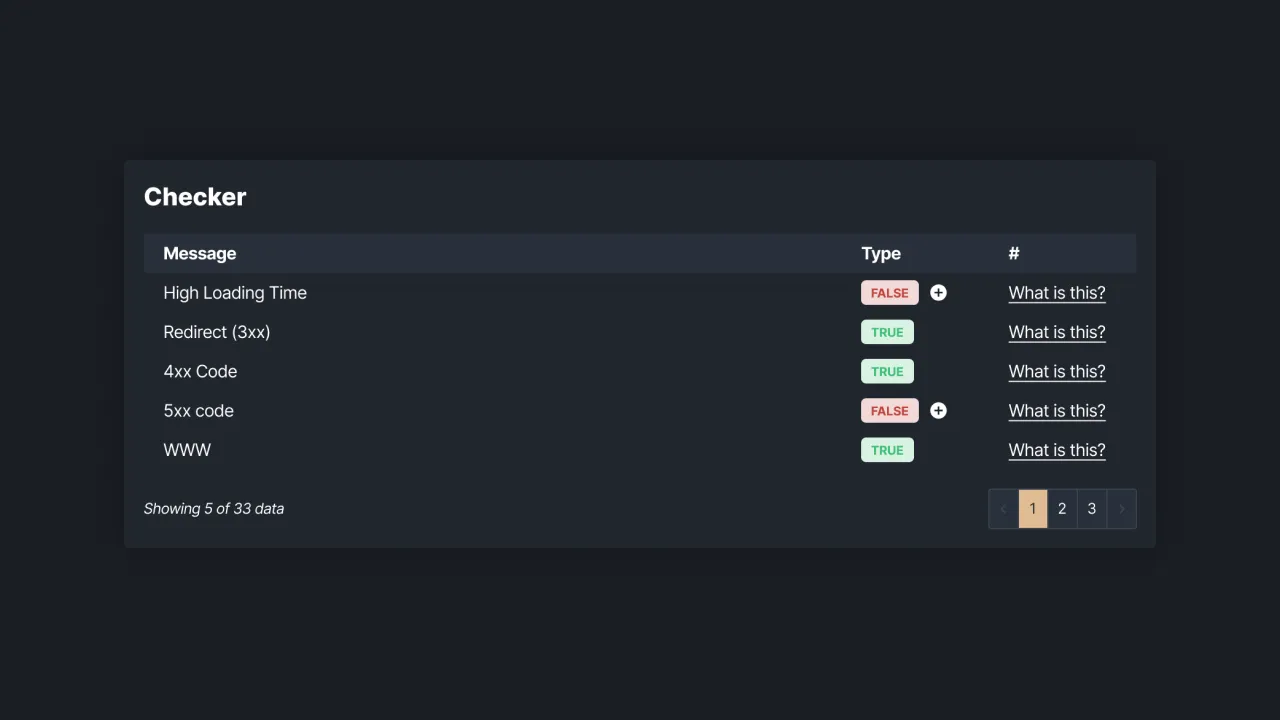 |
|---|
| Figure 5 - Checker Basic Audit Report |
Metatags provide metadata information from web pages that can make it easier for search engines to index your website. Overall, this report will help web owners to know the current state of the web and the SEO issues that can be optimized. If you need our help, please contact us at support@sequence.day